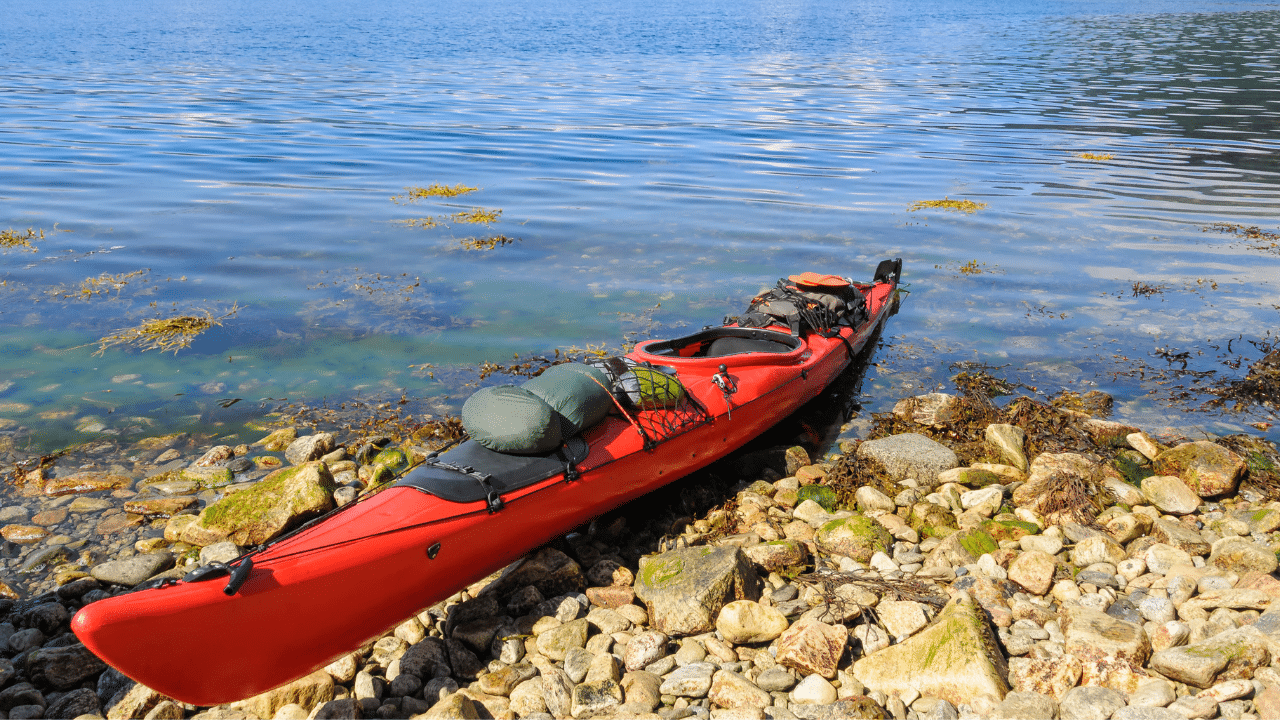
- Alabama
- Alaska
- Arizona
- Arkansas
- California
- Colorado
- Connecticut
- Delaware
- Florida
- Georgia
- Hawaii
- Idaho
- Illinois
- Indiana
- Iowa
- Kansas
- Kentucky
- Louisiana
- Maine
- Maryland
- Massachusetts
- Michigan
- Minnesota
- Mississippi
- Missouri
- Montana
- Nebraska
- Nevada
- New Hampshire
- New Jersey
- New Mexico
- New York
- North Carolina
- North Dakota
- Ohio
- Oklahoma
- Oregon
- Pennsylvania
- Rhode Island
- South Carolina
- South Dakota
- Tennessee
- Texas
- Utah
- Vermont
- Virginia
- Washington
- West Virginia
- Wisconsin
- Wyoming
Kayaking Sleep Upgrade: I Never Knew a Sleeping Bag Could Make This Much Difference!
Kayaking sleeping bag!
As a seasoned kayaker, I always figured a sleeping bag was a sleeping bag. Sure, I'd shiver through chilly nights with cheap, bulky options, or sweat it out in sweltering ones. Turns out, the right sleeping bag can be the difference between tossing and turning on the shore and getting those precious hours of rest needed to tackle the water with renewed energy.
Here's the thing about kayaking adventures: you face unique challenges when it comes to sleep. Space is tight in your kayak, dampness is often your enemy, and temperatures can swing wildly. Let's dive into how to find the perfect sleeping bag for your kayaking journeys.
Sleeping Bag Must-Haves for Kayakers
- Water Resistance: If there's one thing you can count on as a kayaker, it's the potential for things to get wet. Look for two key aspects:
- Synthetic Insulation: This is your best bet. Unlike down, which loses its insulating power when damp, most synthetic materials retain some warmth even when wet.Water-resistant Shell: Choose a bag with a DWR (durable water repellent) finish to shed light rain or splashes. A waterproof dry bag for storage is always recommended, but this adds a layer of protection.Packability: We're not backpacking here, but space is a premium in your kayak. Compressible, lightweight sleeping bags are vital. Look for options that come with a compression sack to minimize bulk.Temperature Rating: Don't just pick the warmest bag. Think about your usual kayaking season and locations. It's better to have a moderately warm bag and layer with clothing or a liner than to roast in a heavy bag on a summer night.
Extra Perks: These can make life easier
- Hood: A snug hood keeps your head warm and provides a buffer from the chilly ground.
- Zipper Features: Two-way zippers are great for venting. No-snag zippers prevent those 3 AM wrestling matches with your sleeping bag.
- Pillow Pocket: Some bags include a clever way to secure a camp pillow or some extra clothing for a comfy headrest.
Sleeping Bag Shapes: Mummy vs. Rectangular
- Mummy: The classic tapered shape is the warmest and most space-efficient. However, some find them restrictive, especially if you're a side sleeper.
- Rectangular: These offer more wiggle room and some unzip to double as blankets. They're less heat efficient, but great for warmer weather or those who value space.
- Hybrid/Semi-Rectangular: The best of both worlds! They offer a balance between warmth and space and are a great option for kayakers.
My Top Picks for Kayak Campers
Let's talk bags! These excel for specific kayaking needs:
Best All-Arounder: Therm-a-Rest Hyperion. Lightweight, water-resistant, compressible, and available in temperature ratings to suit most conditions. A solid investment for all but the coldest trips.
Budget-Friendly Hero: Cosmic Sleeping Bag 20 Degree. A tried-and-true synthetic bag at a great price. Not the most packable, but reliable for beginner kayak campers.
Ultralight & Warm: Sea to Summit Spark Spl Sleeping Bag:. Incredibly light and packs down teeny. If space is your ultimate concern and you're camping in mild-to-moderate weather, this is a dream.
Cozy Comfort: NEMO Disco 15 Degree. A semi-rectangular shape for those who prioritize room to move, with water-resistant protection and spoon-shaped foot box so your feet don't feel cramped.
Wet Weather Warrior: Mountain Hardwear Phantom 32 Degree. Exceptional water resistance, a roomy cut for layering, and still a reasonable weight for kayak adventures.
Don't Forget These Extras
- Sleeping Pad: Essential! Even the warmest bag won't keep you comfy on the hard ground. Inflatable pads are space-saving, though foam offers worry-free reliability.Compression Dry Bag: Your insurance policy against truly soaked gear. Worth every penny.Base Layers: Merino wool is a lifesaver. It warms even if damp, wicks sweat, and naturally fights odor (important in small spaces!)Sleeping Bag Liner: Adds warmth on frigid nights, extends the life of your bag by keeping it clean, and is comfy against the skin.
My "Aha!" Moments: A Kayaker's Perspective
Let me tell you, the first night I slept in a proper kayak-friendly bag was revelatory. No more damp chills seeping in! No feeling like a stuffed sausage in a too-tight mummy bag! Just hours of cozy warmth followed by easy pack-up in the morning.











